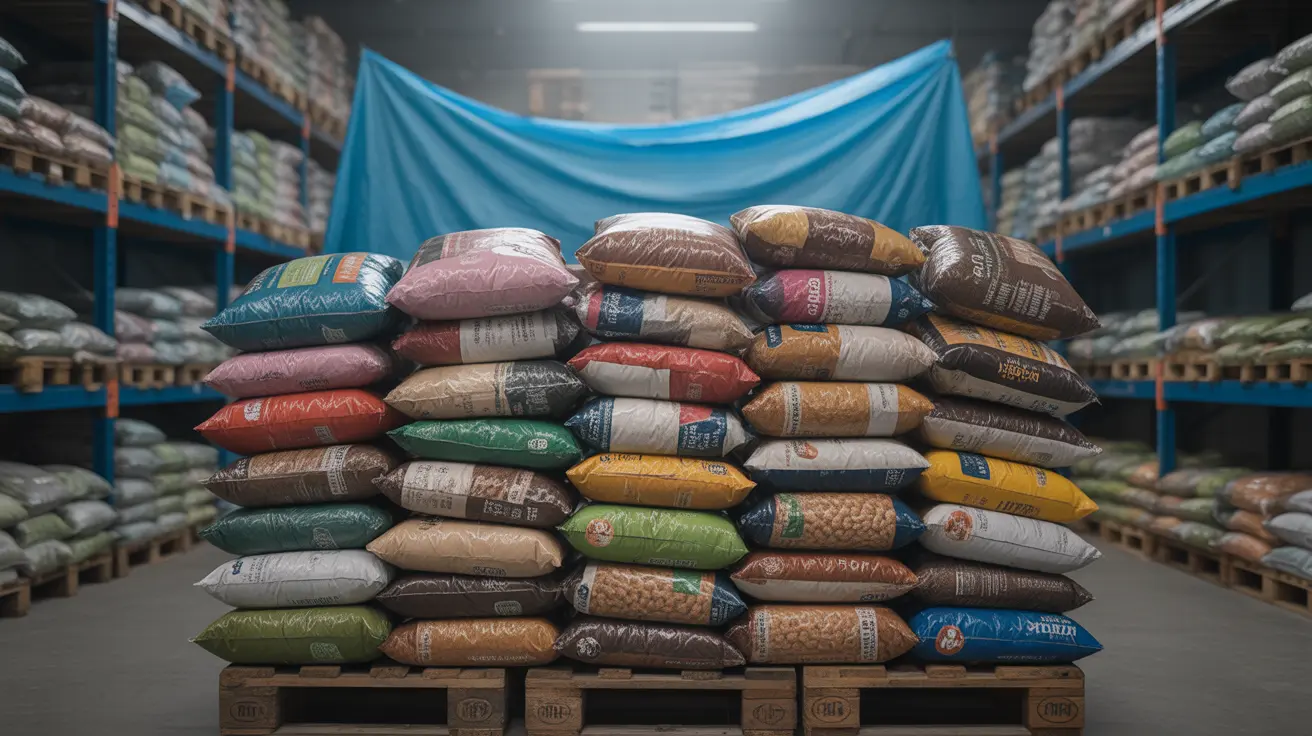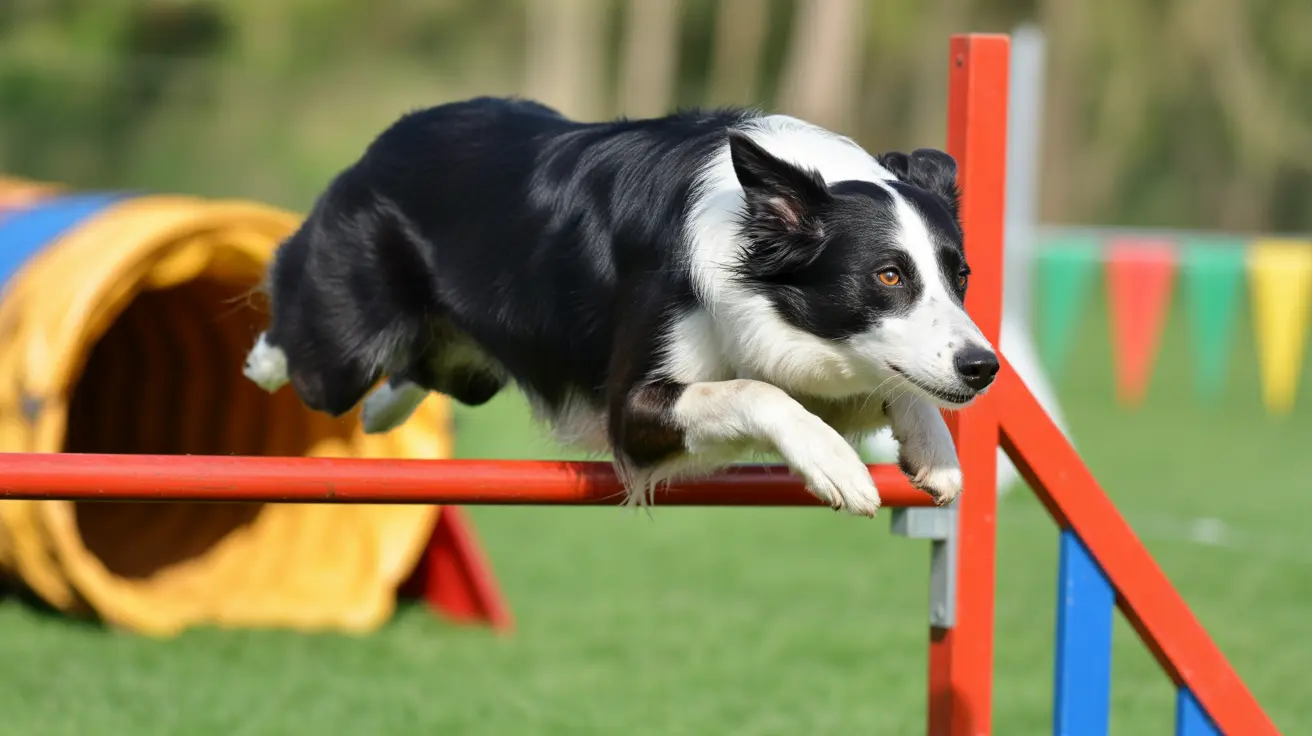The Complete Guide to Dog Sports and Activities for Dogs and Owners
Dog sports and activities have revolutionized the way we bond with our canine companions, offering structured opportunities for exercise, mental stimulation, and teamwork. These competitive activities are designed specifically for dogs and their owners to engage in physical and mental challenges that strengthen their relationship while improving canine fitness. Whether you're a first-time dog owner or an experienced handler looking to explore new disciplines, dog sports provide exercise, stimulation, and opportunities for collaboration that benefit both you and your four-legged partner.
From high-energy agility courses to precision-focused obedience training, dog sports encompass a diverse range of activities suitable for dogs of all breeds, ages, and abilities. These sports emphasize positive reinforcement, gradual skill building, and safety while fostering skills and confidence that enhance everyday life. The beauty of dog sports lies in their adaptability – whether your dog thrives on speed and excitement or prefers quieter, more methodical challenges, there's an activity perfectly suited to your team's unique characteristics.
High-Energy Competitive Dog Sports
Agility Training and Competition
Agility stands as one of the most popular and visually exciting dog sports, where dogs navigate obstacle courses featuring jumps, tunnels, weave poles, and other challenges. Dogs must complete these courses guided only by their handler's voice and gestures, testing speed, coordination, and obedience while promoting physical fitness and mental acuity. This sport is remarkably adaptable for all skill levels, making it an excellent entry point for beginners while offering advanced challenges for experienced teams.
The teamwork required in agility promotes exceptional communication between dog and handler, as success depends entirely on clear signals and mutual trust. Training typically begins with basic obstacles and gradually progresses to more complex courses, emphasizing positive reinforcement and building confidence at each stage.
Flyball: The Ultimate Team Sport
Flyball represents the epitome of team-based dog sports, featuring relay races where teams of four dogs sequentially jump hurdles, trigger a box to release a tennis ball, retrieve it, and race back to their handlers. This high-energy sport encourages teamwork, stamina, and socialization while providing intense cardiovascular exercise for participating dogs.
The competitive nature of flyball creates an exciting atmosphere that energizes both dogs and spectators. Teams must work cohesively, with each dog's performance directly impacting the overall success. This sport is particularly beneficial for dogs that thrive in social environments and enjoy the stimulation of working alongside other canines.
Dock Diving for Water-Loving Dogs
Dock diving, also known as dock jumping, offers an ideal sport for water-loving breeds where dogs compete to jump the farthest or highest from a dock into water. This activity provides excellent low-impact exercise while allowing dogs to engage their natural swimming instincts in a competitive setting.
The sport requires minimal equipment but offers maximum enjoyment for dogs that naturally gravitate toward water activities. Training focuses on building confidence around water and developing jumping techniques that maximize distance and height while ensuring safety.
Precision and Obedience-Based Activities
Heelwork to Music and Canine Freestyle
Heelwork to Music, also known as Canine Freestyle or Dog Dancing, represents the artistic side of dog sports where dogs perform choreographed routines set to music. This discipline showcases obedience and tricks while emphasizing cooperation and artistic expression between dog and handler teams.
Success in canine freestyle requires observing and training a dog's natural movements to create routines that suit the dog's size, temperament, and physical abilities. Handlers must develop creativity in choreography while maintaining precise timing and clear communication with their canine partners.
Obedience Competition Training
Obedience sports focus solely on commands and precise responsiveness, with competitions ranging from beginner levels to world championship events. These disciplines test a dog's ability to perform specific exercises with accuracy and consistency, emphasizing the fundamental skills that underpin all other dog sports.
Training for obedience competition requires patience and consistency, as dogs must demonstrate reliability in performing commands regardless of distractions or environmental changes. The skills developed through obedience training transfer directly to improved behavior management in everyday situations.
Mobility and Standardized Exercises
Mobility features a set of standardized obedience and movement exercises that are judged on completion rather than speed. This approach makes the sport accessible to dogs of varying ages and physical capabilities while maintaining the mental challenges that keep dogs engaged and stimulated.
The emphasis on completion over speed allows handlers to work at their dog's natural pace, making this an excellent choice for older dogs or those recovering from injuries who still benefit from structured mental and physical activity.
Scent-Based and Tracking Sports
Scentwork and Nose Work Activities
Scentwork, also known as Nose Work, capitalizes on dogs' exceptional olfactory abilities by having them locate specific scents hidden in various environments. This sport provides intense mental challenges suitable for all dogs, regardless of age, size, or physical limitations.
Training dogs for scentwork builds confidence and provides mental stimulation that can be as exhausting as physical exercise. The self-rewarding nature of successful scent detection makes this sport particularly engaging for dogs, as they experience the satisfaction of completing their "work."
Mantrailing and Advanced Tracking
Mantrailing involves dogs tracking human scent trails at their own pace, enhancing natural scenting skills through a dog-led, non-competitive activity. This discipline differs from traditional tracking by focusing specifically on human scent rather than ground disturbance, requiring dogs to discriminate between individual human odors.
The sport appeals to dogs' instinctual behaviors while providing practical skills that extend beyond recreational activities. Training emphasizes allowing dogs to work independently while maintaining safety and communication with handlers.
Fährtenhund Tracking Challenges
Fährtenhund requires dogs to follow scent trails and locate specific objects, testing tracking skills at varying levels of difficulty. This traditional European sport demands precision and patience from both dog and handler as they navigate increasingly complex tracking scenarios.
Success in Fährtenhund requires systematic training that builds from basic scent recognition to complex trail following, with dogs learning to indicate found objects while maintaining focus on the primary tracking objective.
Specialized Breed-Specific Sports
Herding Sports and Hütehund Activities
Hütehund sports involve herding races designed for specific breeds to guide sheep through obstacle courses, allowing herding dogs to engage their instinctual behaviors in structured competitive settings. These sports are particularly beneficial for Border Collies, Australian Shepherds, and other herding breeds that require outlets for their natural working drives.
Training for herding sports requires understanding both canine instincts and livestock behavior, as successful teams must work harmoniously with sheep while navigating course challenges. The mental stimulation provided by herding activities often proves more satisfying for working breeds than traditional exercise alone.
Treibball: Urban Herding Alternative
Treibball offers an innovative solution for herding breeds living in urban environments, where dogs herd large exercise balls into goals, blending problem-solving and obedience skills. This sport appeals especially to herding breeds that lack access to traditional livestock while providing similar mental challenges and satisfaction.
The sport requires dogs to think strategically about moving balls efficiently while responding to handler directions, creating an excellent mental workout that satisfies herding instincts without requiring sheep or extensive rural space.
Windhund Racing and Coursing
Windhundsport involves sprint racing and coursing with greyhounds and other sighthounds chasing lure devices at high speeds. Fast CAT (Coursing Ability Test) represents a popular version where dogs complete timed 100-yard sprints, measuring pure speed and chase ability.
Lure coursing allows sighthounds to engage their natural prey drive in a controlled environment, providing the intense exercise these breeds require while satisfying their instinctual behaviors. Training focuses on building chase drive while maintaining safety and control.
Adventure and Endurance Sports
Canicross and Running Sports
Canicross involves running where the dog is connected to the runner through specialized equipment, with variations including biking (bikejoring) and skiing. Dogs are attached to their handlers and help pull them over various terrains, providing cardiovascular exercise for both team members.
Training for canicross requires teaching commands for direction and speed control while building endurance gradually. Safety equipment and proper technique are essential, as the sport demands coordination between dog and handler while navigating diverse terrain conditions.
Schlittenhundesport and Sledding
Schlittenhundesport encompasses sled dog racing disciplines based on dog numbers and handler movement, including running and skiing variations. This historic sport traces back to practical transportation needs but has evolved into competitive racing that tests endurance, teamwork, and navigation skills.
Modern sledding sports accommodate various team sizes and equipment types, making the activities accessible to handlers without traditional sled dog breeds. Training emphasizes building stamina, teaching directional commands, and developing the cooperation necessary for effective team performance.
Zughundesport and Weight Pulling
Zughundesport represents a historic sport of pulling loads or carts, requiring strength, endurance, and cooperation between dog and handler. This activity is particularly suitable for large, strong breeds that enjoy physical challenges and working alongside their handlers.
Training for weight pulling must progress gradually to build strength safely while teaching dogs to work in harness effectively. The sport provides excellent conditioning for muscular development while satisfying the working drives of breeds developed for draft purposes.
Health Benefits and Safety Considerations
Participating in dog sports provides numerous benefits including improved physical fitness, mental stimulation, social interaction, enhanced obedience, and stronger dog-owner bonds. These activities offer structured exercise that goes beyond simple walks, providing the mental challenges that many dogs crave for complete satisfaction.
Veterinary evaluation is strongly recommended before starting new activities to ensure suitability and physical readiness for your chosen sport. Joint health proves critical for canine athletes, and some handlers supplement their dogs' diets with specialized nutrients. Research indicates that supplements containing undenatured type II collagen (UC-II®) combined with omega-3 fatty acids demonstrate better efficacy for reducing pain and improving mobility than traditional supplements like glucosamine and chondroitin.
Low-impact and adaptive sports like Canine Hoopers allow dogs of various ages and health conditions to enjoy activities safely. These sports feature dogs navigating courses with hoops, barrels, and tunnels in settings designed to minimize stress on joints, making them suitable for older dogs or those with mobility issues.
Getting Started in Dog Sports
Many communities offer clubs, classes, and events that welcome beginners and provide resources to help find the right sport for each dog-owner team. Sports like agility, flyball, and dock diving suit energetic dogs that thrive on excitement and challenge, while scentwork and canine hoopers serve dogs needing quieter or lower-impact activities.
Starting your journey in dog sports requires honest assessment of your dog's temperament, physical condition, and natural abilities. Consider your own fitness level and time commitment, as most sports require consistent training and practice to develop competency and safety.
Frequently Asked Questions
What dog sport is best for beginners?
Agility and basic obedience sports offer excellent entry points for beginners because they're adaptable to all skill levels and provide foundation skills useful in other sports. These activities allow gradual progression while building communication and trust between dog and handler.
How do I know if my dog is physically ready for sports?
Veterinary evaluation is essential before starting any dog sport. Your veterinarian can assess your dog's joint health, cardiovascular fitness, and overall condition to recommend suitable activities and identify any limitations that require consideration.
Can older dogs participate in dog sports?
Yes, many sports offer low-impact alternatives suitable for senior dogs. Scentwork, canine hoopers, and mobility sports provide mental stimulation and gentle physical activity without stressing aging joints. Always consult your veterinarian about appropriate activity levels.
What equipment do I need to start dog sports?
Equipment needs vary by sport, but most activities begin with basic items like properly fitted collars, leashes, and treats for training. Many clubs provide equipment for beginners, allowing you to try activities before investing in specialized gear.
How long does it take to train a dog for competition?
Training timelines vary significantly based on the sport, your dog's aptitude, and training frequency. Basic skills might develop within weeks, while competition readiness typically requires months of consistent practice. Focus on building skills gradually rather than rushing toward competition goals.
Are certain breeds better suited for specific sports?
While breed characteristics influence natural aptitudes, most sports can accommodate various breeds with proper training and realistic expectations. Herding breeds excel at activities requiring focus and direction, while sporting breeds often thrive in high-energy pursuits like flyball or dock diving.
How do dog sports improve my dog's behavior at home?
Dog sports provide mental stimulation that reduces destructive behaviors while teaching impulse control, focus, and responsiveness to commands. The training techniques and communication skills developed through sports directly transfer to improved household behavior and stronger obedience in daily situations.
Conclusion
Dog sports and activities offer enriching opportunities for dogs and owners to exercise, bond, and develop new skills together while having fun. From high-energy pursuits like agility and flyball to precision-focused activities like obedience and scentwork, these sports provide options suitable for every dog's temperament and physical capabilities. The key to success lies in choosing activities that match your dog's natural abilities and interests while maintaining realistic expectations and prioritizing safety throughout training and competition.
As you explore the world of dog sports, remember that the journey itself provides as much value as any competitive achievement. The skills, confidence, and communication developed through these activities enhance your relationship with your dog while providing the physical exercise and mental stimulation essential for canine wellbeing. Whether you pursue casual participation or serious competition, dog sports offer a pathway to deeper connection and mutual enjoyment that extends far beyond the training field.






